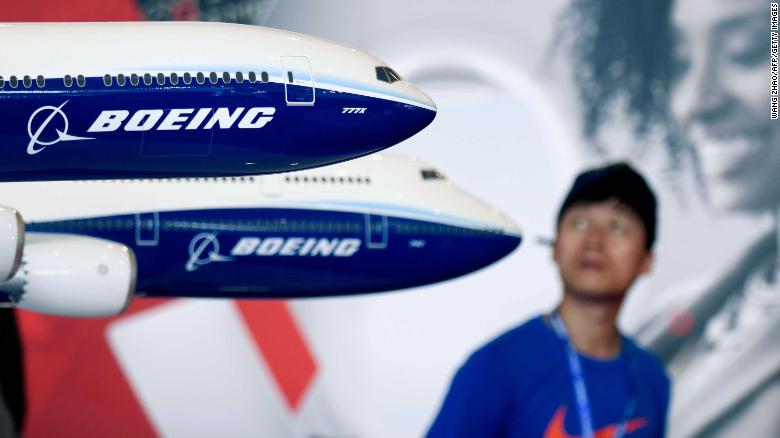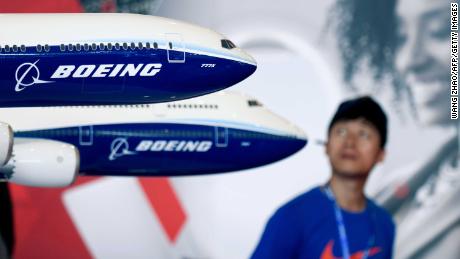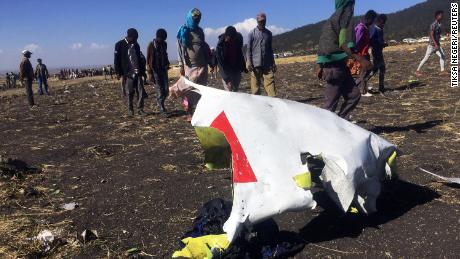New York (CNN Business)Problems with Boeing's 737 Max killed 346 people. The plane's grounding has cost the company billions of dollars and caused problems for airlines around the globe.
Now the 737 Max crisis could delay or even end Boeing's plans for a new mid-size airplane, widely expected to be called the Boeing 797. Before the crisis, the aviation industry expected Boeing would go ahead with plans for the plane. Now several experts say the chances are about 50-50, at best.
"I gave a presentation in January where I said it was about a 65% chance," said Richard Aboulafia, aerospace analyst with the Teal Group. "Now it's still in our forecasts, but it's hanging by a thread."
Boeing says it continues to work on plans for the potential plane, even in the face of the 737 Max crisis, which began in the wake of two crashes in the last 10 months тАФ a Lion Air jet last October and Ethiopian Airlines in March.
Boeing (BA) says it continues to work on plans for the potential plane, even in the face of the 737 Max crisis.
"The Max has been our priority and we prioritize resources and people that focus on the Max," said Dennis Muilenburg, Boeing's CEO, at an investor conference last week hosted by Jefferies. "But we do have a dedicated team that's continuing to work .. . the potential middle of the market airplane."
What is the 797?
The 797 would be a long-range jet that could seat about 250 passengers тАФ more than a current single-aisle jet like the 737 Max, but less than a typical widebody jet like the 787 Dreamliner, which can seat up to 335. It would allow airlines to serve long routes where there might not be enough traffic to fill a larger plane, allowing passengers to have non-stop flights instead of transferring in a hub.
It is expected to be built from lightweight composite materials to give it very good fuel economy and range.
"There is undoubted demand for a midsize airplane," said John Grant, senior analyst with OAG. "It is really sweet spot for a lot of airlines."
But Muilenburg said in April 2018 that Boeing would weigh plans for the new plane "over the next year," raising expectations that a decision to move ahead with the plane would be announced by mid-2019. But that by the time Boeing was devoting most of its attention to the 737 Max crisis, not a new plane.
"They're now not going to be in position to make an announcement until 2020 at the earliest," said Grant. "That gives Airbus a huge head start."
If Boeing does go forward with its plans for the new plane, it still hopes to have it in the air by 2025. But Muilenburg said that Boeing will first have to decide whether if it makes sense to spend $15 billion to develop the plane.
"We're going to make sure the business case make sense for us and our customers, if it does, we'll go," he said. "If not we've got other investments we can make."
Airbus' head start
As Boeing focuses most of its attention on the 737 Max has given, Airbus has gotten an unexpected head start in the mid-size segment, announcing it would go ahead with its own entry, the A321XLR. That could lead some airlines to commit to the Airbus version of the long-range mid-size jet.
"Airbus has already got 200-plus orders for an aircraft that doesn't exist at the moment," said Grant. Because Boeing has yet to announce a decision to build the plane, it does not have any orders.
Asked last month by an analyst how long United Airlines (UAL) could wait before deciding which plane it would order for that part of the market, CFO Gerald Laderman said, "We have some time. But you're right, we would like to see some clarity so that we can make the choice."
Once an airline makes a choice for a certain type of aircraft, it typically sticks with it. It is much more expensive to have two different types of planes in the same class of aircraft, because pilots cannot move freely between different manufacturers' aircraft. Each plane requires specialized training. Pilots cannot easily move between different brands of automobiles or trucks. And owning two different manufacturers' aircraft also raises the costs of spare parts and maintenance.
So Boeing must make a decision on the 797 soon, even as it focuses on trying to fix the Max.
"There's certainly some pressure from some customers. It's a big decision," said Cai von Rumohr. "But it's better to wait a little longer and make the right one."
Whether or not Boeing decides to enter the segment could make a big difference to passengers on long-distance flights.
The Airbus A321XLR will be a single aisle jet, and some analysts and passengers have suggested passengers will be unhappy about sitting on a 10-hour flight on single-aisle jet. If Boeing enters the segment, it is expected to make a more comfortable wide-body jet, which could have wider seats, and more room to move about during a long flight.
But widebodies are more expensive to build and to operate, which might be another factor that keeps Boeing out of the segment. If it does build one, it is expected to use lighter-weight composite materials to keep the weight and operating costs in line with a single-aisle jet. It's just bound to be more difficult to move a wider aircraft through the air as efficiently as a narrow jet said von Rumohr.
Tumbling orders
Boeing's orders have been severely limited since the start of the 737 Max grounding in March.
On Tuesday it reported it had 31 orders for new jets in July, with most of the orders for the 787 Dreamliner. It has yet to announce any firm orders for the 737 Max since the grounding. And because it can't deliver any of the 737 Max jets it continues to build, deliveries fell to only 19 from 39 a year earlier. Deliveries are important to the company because that's when it gets most of the money from the sale of a jet.
















